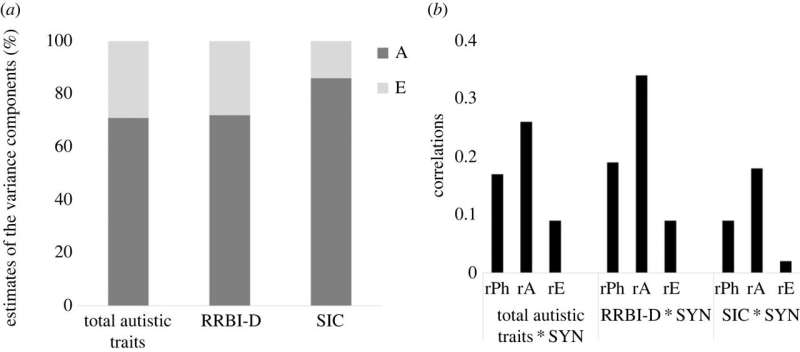
A team of epidemiologists and neurologists from Karolinska Institutet, Tilburg University and the University of Gothenburg has found a possible genetic link between synesthesia and autism. In their study, reported in the journal Proceedings of the Royal Society B: Biological Sciences, the group studied the genes of identical twins to learn more about the roots of synesthesia.
Synesthesia is a sensory phenomenon in which stimulation of one sensory pathway induces the experience of a separate sensory perception, such as the attribution of color to a sound. Prior research has suggested this condition runs in families, which hints at a genetic root. Other research has suggested that environmental factors may play a role, as well, and further clouding the problem is prior research showing that the condition is more prevalent in people with autism.
In this new effort, the research team investigated whether the phenomenon is caused by genetics, the environment, or perhaps even a combination of both. To that end, they conducted a study involving identical autistic twins.
Data for the twins came from Sweden’s Child and Adolescent Twin Study, which has been involved in collecting data from medical tests and surveys over many years. The research team isolated 658 pairs of identical twins for use in their study. They also included groups of same- and opposite-gender twins without autism to serve as control groups. The researchers then obtained permission to use the data from the twins and asked them more questions, such as whether they experienced synesthesia. To learn more about possible genetic roots for synesthesia, the team looked at zygosity for all the subjects under study.
The research team found that the identical twins were more likely to experience synesthesia than the fraternal twins, suggesting a genetic link. But they also uncovered possible involvement of environmental factors as well. They found, for example, that types of synesthesia were sometimes experienced by only one identical twin. The researchers also found that the twins with more repetitive or restricted behaviors and interests tended to be more likely to experience synesthesia—again, suggesting a genetic link.
In the end, the research team was not able to make a definitive case for the root cause of synesthesia and suggest that more work is required.
More information:
Mark J. Taylor et al, Genetic and environmental architecture of synaesthesia and its association with the autism spectrum—a twin study, Proceedings of the Royal Society B: Biological Sciences (2023). DOI: 10.1098/rspb.2023.1888
Journal information:
Proceedings of the Royal Society B
Source: Read Full Article
